Does this sound familiar? You have a suite of new clients who want to increase their brand awareness amongst consumers. They’re relying on you to answer this one, big question: How can they do so?
See also: Guides to Content Marketing Strategy, Lead Generation and Performance Marketing
According to Influencer Marketing Hub 2021, social marketers’ top priority is to increase brand awareness.
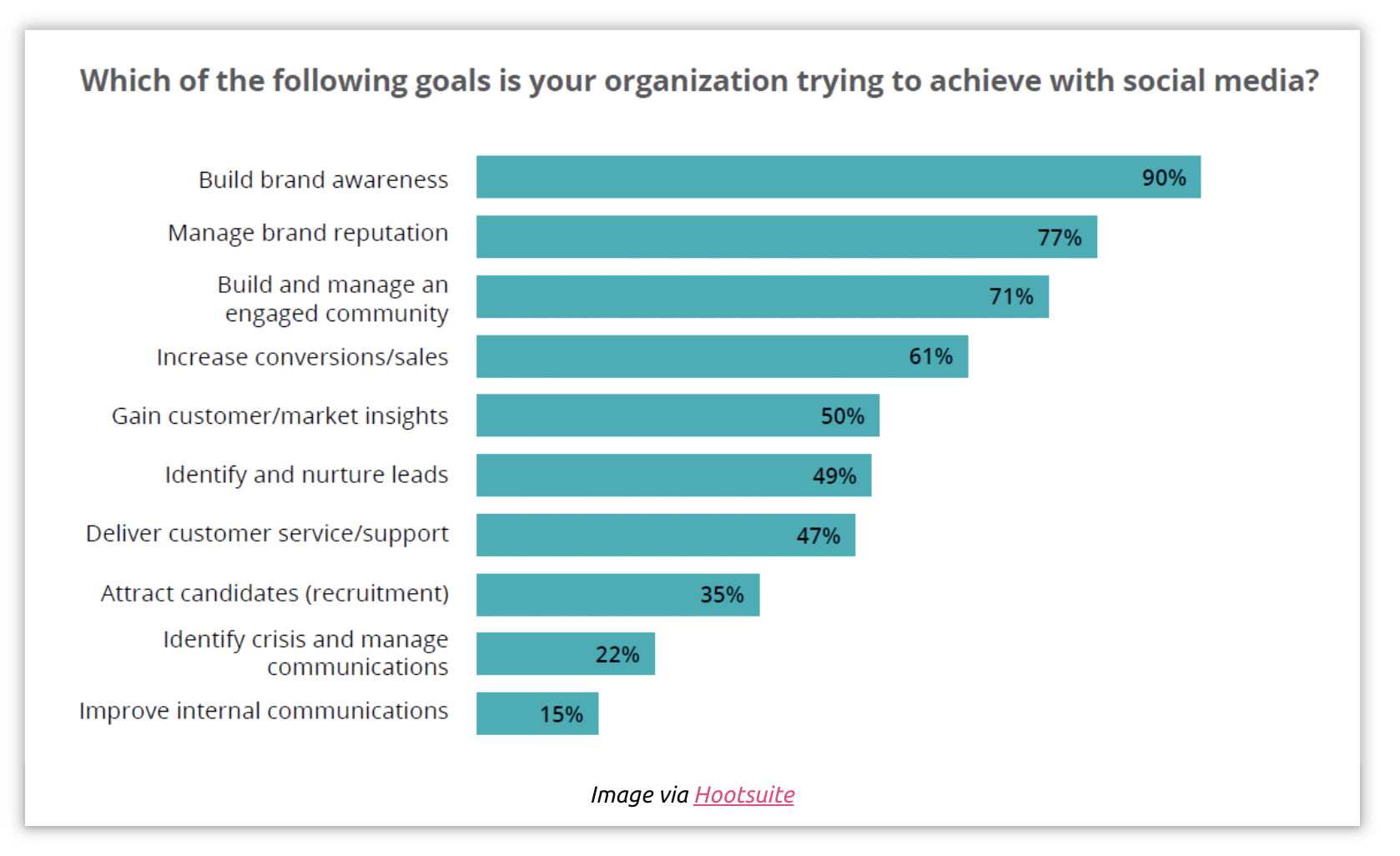
Here you will find all you need to know about increasing brand awareness, including a handy brand awareness definition and a brand awareness strategy guide.
What is Brand Awareness?
Brand awareness is the way in which consumers recognize and remember your business. The greater the brand awareness you have, the more audiences will be familiar with your logo, messaging, and products.
Is brand awareness a marketing strategy?
This definition is broad, but so is brand awareness. It’s an all-encompassing term for how aware and informed people are about what your brand has to offer.
Why is Brand Awareness Important?
Brand awareness is important because it helps audiences understand, recall, and become comfortable with your branding and products. If you can build brand awareness among your target demographic, you can help your brand become top-of-mind when these consumers are ready to research and make a purchase.
Think about it.
Since customers already recognize your brand, they will be more likely to buy from your business than, say, a competitor’s business with which they’re not as familiar.
Brand awareness is often seen as the first stage of the marketing funnel. By creating brand awareness, you can cast a wide net across your audience of potential buyers. From there, you can funnel leads towards the research and decision-making processes, and eventually the buying process.
To learn more about these main advantages, refer to our guide on the importance of brand awareness.
How Does Digital Marketing Increase Brand Awareness?
It’s no secret that people today spend a great deal of their time online––more than six hours per day––which indicates that the internet is not a place to miss if you’re looking for brand awareness.
Get in front of consumers where they are, and take advantage of all the exciting awareness opportunities available in the digital world today, and to come in the future.
Now, let’s dive into some of the ways you can use digital marketing to improve your brand awareness.
How To Build Online Brand Awareness
There are many ways to build, create, and establish brand awareness, but here are a few you can start with today.
1. Guest blog for other sites
It’s important for brands to run their own blogs and build owned audiences, but they can only drive so much mileage from these assets.
This is where guest blogging comes in. This is the process of writing and pitching blog posts for another publication.
Here’s how you do it:
- Research blogs and publications in your industry–Search for industry keywords and guest posts via trusty old Google and social channels. For that client in education, for example, a quick search of ‘education guest blogging’ brings you this list of education blogs that accept guest posts. As Neil Patel suggests, you can also Google ‘guest post guidelines’ and ‘guest post by’ in your industry to find sites that accept guest submissions. Or you can use platforms like MyBlogGuest and this collection of 500+ sites from BuzzBlogger to aid in your quest. You can find examples like this one from the Christensen Institute on GettingSmart.com:
 Make a list of the guest-post accepting sites that your brand is a good fit for–Check each site’s blog content, comments’ sections, and social channels to better understand who their audiences are and how they engage with the content. You’ll want to make sure that you can provide content that fits into their offerings, while also offering a fresh take.
Make a list of the guest-post accepting sites that your brand is a good fit for–Check each site’s blog content, comments’ sections, and social channels to better understand who their audiences are and how they engage with the content. You’ll want to make sure that you can provide content that fits into their offerings, while also offering a fresh take.- Brainstorm ideas for blog posts–This can include your unique and helpful insights. Make sure they haven’t been covered on the sites you reach out to.
- Email each site with your pitches according to their submission guidelines–You may even write an entire post and let editors know it’s ready to go.
- Use these ideas to gain access to an entirely new audience and let the publication you guest blog on benefit from free content from a new industry voice.
2. Create shareable infographics
Shares are crucial for reaching new audiences on social media. They ensure that your content gets seen by people beyond your follower base and they build organic reach in the wake of pesky algorithm changes. This is especially true on Facebook, where the algorithm favors shares from friends and family over posts from brands.
One of the most shareable content formats out there is the infographic. They’re visually engaging, easy to consume, and more fun to read than a regular article. Remember that the brain processes visuals 60,000 times faster than plain text and 94% of blog posts with visuals get more engagement.
3. Improve your SEO with user-intent related keywords
Search engine optimization (SEO) may seem intimidating, but it’s simple to implement — and it’s vital to a brand’s exposure online. It involves getting your content seen by search engines like Google and placed on search results pages.
Here’s how you can use keywords to improve your SEO today:
- Research keywords in your industry and content categories–These are the words that your target audiences are searching to find companies like yours. When optimizing for brand awareness, you want to focus on incorporating informational keywords into your content. These are keywords that match searches of people beginning their buyer journey and looking to learn more about which products are out there. Use tools like Ahrefs, SEMrush and Moz Keyword Explorer to find the most important keywords in your industry and among your competitors.
- Build content around these keywords–Say you’re a fashion retailer and you find that a lot of people are searching for ‘fall boots.’ You might create a post titled, ‘5 Fall Boots to Kick Off the New Season.’ A good way to go about this is to use a cluster model.
- Incorporate your keywords into the headline, body, and image titles of your post–he more mentions, the easier it is for Google to pick up your post.
Red flag: Don’t over stuff your posts with keywords, however, Google will penalize you for this. There’s a fine balance!
4. Start a Referral Program
One way to achieve brand awareness through the coveted word-of-mouth marketing is to help your loyal customers be your best advocates.
49% of U.S. consumers say friends and family are their top sources of brand awareness.
A referral program not only increases your reach and the amount of people who know your name, but it also brings that awareness from a source that people trust––their own friends and family.
Many companies offer referral programs, and one example is activewear company Alala who offers their customers 20% off of a purchase when they refer a friend who also receives 20% off. For consumers and their friends, it’s a win-win. For Alala, it’s a way to mobilize their brand evangelists to spread awareness and earn new customers, too.
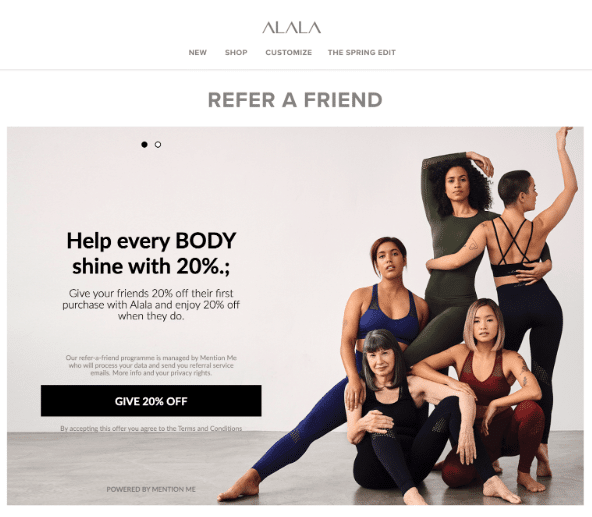
5. Maximize your organic social media presence
We’ll get into paid social media a little later on, but an important stop on the brand awareness train comes from organic social media.
Are you creating content that’s worthy of a follower sending to a friend? Or, maybe even tagging them?
In the former, it all comes down to creating content that is high-quality, that triggers an emotional response, and that adds value to a follower’s life enough that they would want to share it with a friend.
For the latter, a social media contest is the perfect way to get your followers tagging their own network, many of whom may not have even heard of you yet. There isn’t just one way a social media contest can be done––in fact, there are many,––but the most important element they all share is that they ask your followers to tag, share, or re-post your content in exchange for a chance to win a prize, and in doing so, they gain you reach and brand awareness.
6. Develop a voice for your brand
According to Adweek, developing a brand voice can help your brand be sticky in the minds of consumers. The voice your brand takes on can be funny, emotional, smart, sentimental––it just has to be true to the brand and the audience you serve.
Having a unique tone makes a brand memorable. Take Dollar Shave Club, Cards Against Humanity, and Slack. These are just three among many brands who’ve ensured their memorability (and shareability!) by creating strong brand voices. It can go a long way when it comes down to awareness in the market.
7. Start a podcast
On the quest of achieving greater brand awareness, the more value you can add to consumers’ lives, the more likely they are to remember you, recommend you, and hopefully become customers.
Creating a podcast doesn’t have to be as straightforward as just talking about your product or service, or commenting on the industry that you’re in––get creative. Are you a fitness company? Interview athletes making a difference in their communities. Are you a beauty brand? Dive into the science behind creating different serums, hair care items, or makeup.
Consider which areas your team may be experts in, or outside experts you could leverage, and create a piece of content that not only adds value to listeners’ lives, but when branded correctly, can work wonders for your brand awareness.
8. Take part in brand partnerships
If you’re looking to increase your brand awareness, chances are other like-minded brands are looking to do the same, right?
Linking up with another brand does more than just combine both companies’ reaches––it also builds trust among both audiences. If they like Brand A, and Brand A is partnering with Brand B, maybe Brand B is someone they should know about, too.
A great example of a brand partnership is BuzzFeed and Best Friends Animal Society. Together, the two brands created a piece of content interviewing well-known actress Emma Watson while she played with adorable kittens. A smart article for many reasons (i.e. cute animals), the piece provided a great brand awareness moment for both partners.

9. Give something away for free
Looking to spread awareness for your brand is not the time to ask people to cough up cash. Instead, giving them a taste of what you have to offer without the commitment of payment can help you build brand and increase awareness.
If you offer a subscription service, this could come in the form of a free trial. How can someone truly know who you are if they haven’t been able to try out your service? They may be aware of your name, but giving them access––even limited access––to your offerings can deepend that awareness.
If you offer a product, this could come in the form of free samples. You may remember in 2016 when Girlfriend Collective nearly broke the internet giving away free leggings. They went from a brand new, unknown brand to 10,000 orders on the day of their official launch.
How to Increase Brand Awareness
Once you figure out how to create a brand awareness strategy, you’ll want to know how to improve brand awareness and how to raise brand awareness.
That’s where these tactics come in:
1. Use native advertising
Employing native advertising is one of the most effective ways of increasing brand awareness and winning over new customers. Since they fit right into their surrounding content and borrow credibility from their host publishing sites, native ads help you reach people where they’re already reading and engaging.
Say you serve up native ads on publications like The New York Daily News or CBS News, you gain the access and trust of their large reader bases by providing recommended content at the end of their articles, like this:

The allure of native ads is easy to see. They’re non-intrusive, easily scalable, and customizable with relevant messaging. This is why native advertising is expecting to comprise over 60% of the digital display market this year, amassing $41.14 billion in spend.
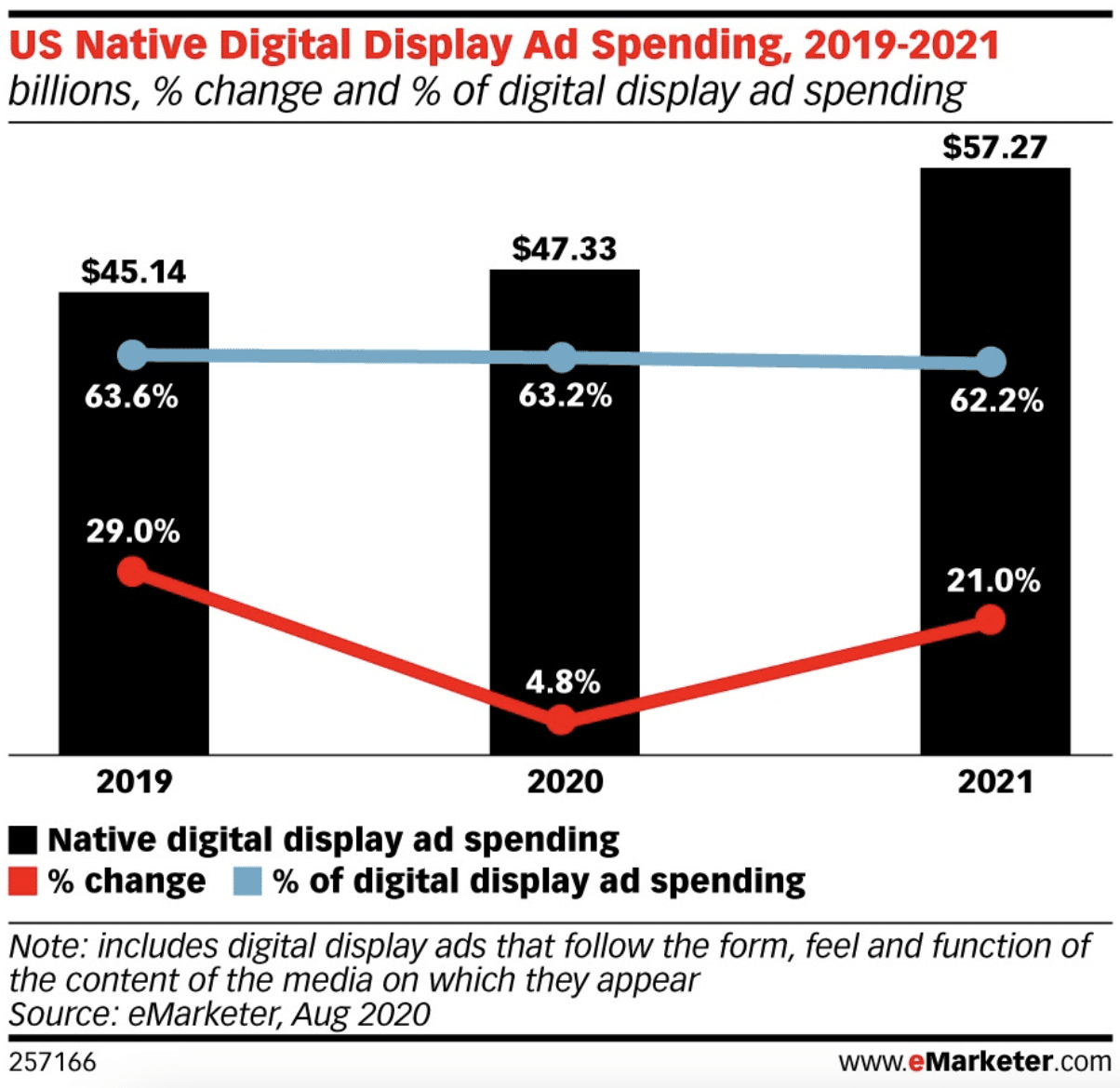
You can use a content discovery platform, like Taboola, to increase brand awareness through native advertising. Taboola distributes your branded content — such as articles and videos — across top publisher sites on the open web. In this way, you can launch niche marketing strategies that reach your target audiences and fill the top of the funnel with people who are already interested in your content and products
38 Case Studies From Brands That Have Succeeded With Taboola
2. Run Facebook and Instagram ads
Your client’s brand probably already has a social media presence, but they have trouble growing their followings and engagement metrics. They need content advertising strategies that launch ads on social media.
By running brand-awareness ads, you can reach new people who might be interested in your client’s brand and even target audiences based on specific behaviors and preferences. Ads also help brands circumnavigate pesky algorithms that can hurt organic reach.
On Facebook and Instagram, you can launch brand-awareness campaigns that improve your reach and recall. Facebook recommends using video and carousel ads (which include a series of media) to target users who might be interested in your messaging. In fact, you can target audiences by categories such as age, location, gender, interest, and device. You can even create ‘lookalike’ audiences of people who are similar to your client’s existing audience, so you can reach those who are most likely to convert.
3. Run ads on Twitter
On Twitter, you can launch brand-awareness campaigns by promoting your tweets and paying for impressions instead of engagements. You set your bid amount per 1,000 impressions and Twitter optimizes your campaign for the best possible reach.
4. Partner with influencers to review your brand
If you’re having trouble connecting with your target audience, you may want to try reaching them through their favorite creators and influencers. Consumers trust recommendations from influencers more than traditional advertisements or even celebrity endorsements. Brands earned an average of $5.78 for every $1 spent on influencer marketing in 2017.
Similar to guest posting, agents can start influencer-marketing campaigns by finding influencers in relevant industries and reaching out with partnership ideas. You can do this by simply searching relevant keywords on social channels and sifting through the posts for influencer content.
You can also search the #sponsored hashtags on Twitter and Instagram to see which influencers are already working with brands in your industry. You might even use influencer-marketing platforms like Upfluence and Traackr to do the legwork for you. Once you find the right influencers, you can gift them free products in exchange for reviews.
5. Partner with influencers to create content
If free products or services in exchange for a review aren’t your thing, you can also leverage influencers to create pieces of content.
Influencers know the type of content that resonates with their audience, and by working with them, they can create a piece of content that not only looks great, but that will hit a chord with their loyal follower-base, making them aware of your brand from a source that they trust.
Examples of Brand Awareness Campaigns
To guide your brand awareness strategy, consider these brand awareness examples from businesses that have run effective campaigns.
KISSmetrics Infographics Raise Brand Awareness
Brands and publications like KISSmetrics use infographics to increase brand visibility. In just two years, the company created 47 infographics, like this one about how page-loading time can cost you:
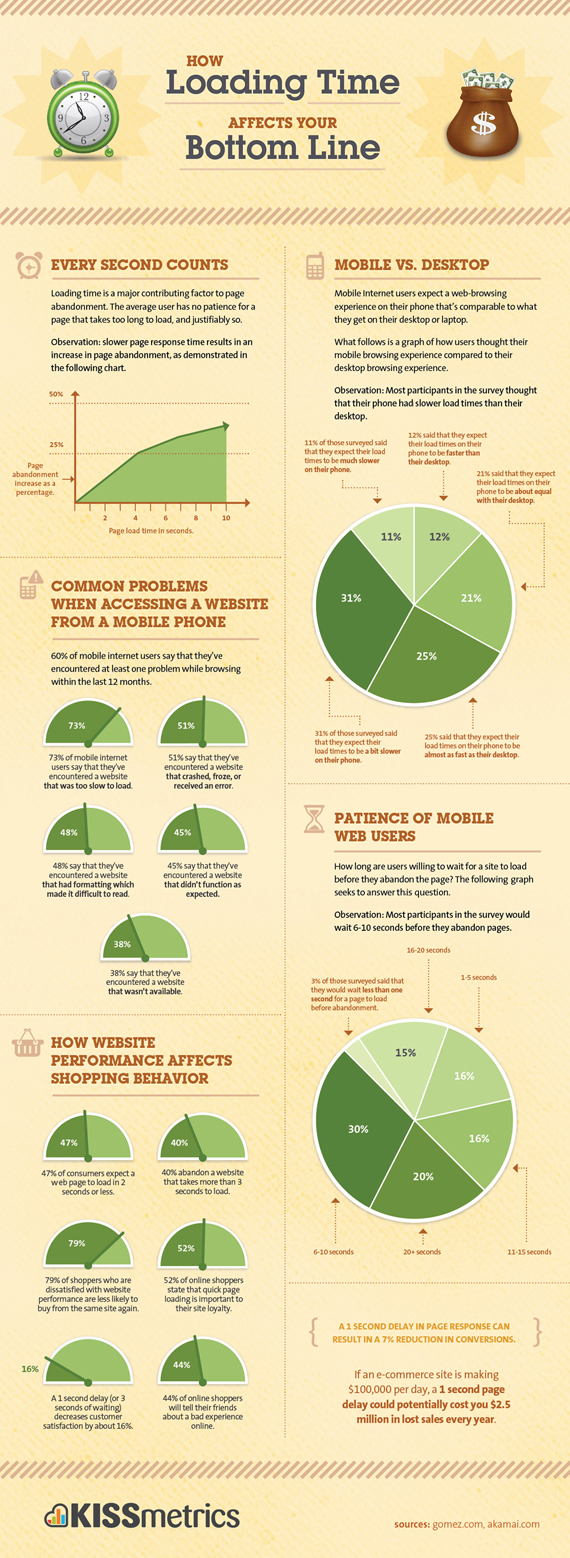
These infographics generated over 41,000 tweets, 2.5 million visitors, and 41,000 backlinks from 3,700 unique domains.
Akbank Instagram Stories Create Brand Awareness
Turkish bank Akbank ran Instagram Stories ads to increase brand awareness. These Stories featured videos of young men and women singing a Turkish pop song that was rewritten to convey their hopes and dreams for the future.
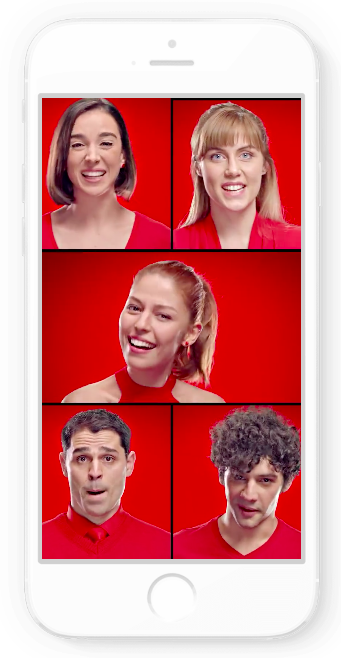

These brand-awareness ads generated 3.3 million video views — a major addition to Akbank’s 64,000 Instagram followers.
Milton & King Influencer Partnerships Build Brand Awareness
Boutique wallpaper brand Milton & King raised brand awareness by partnering with Instagram and blogging influencers. The brand tapped 45 creators to collectively produce over 150 pieces of content featuring Milton & King wallpaper, like this design from Haneen of Haneen’s Haven.

As a result, Milton & King reached over 980,000 people, drove over 80,000 social engagements, and generated over 10,000 new social followers.
Samsung Native Ads Increase Brand Awareness
Here’s a brand awareness case study to guide your strategy.
Samsung Life, Samsung’s insurance services arm, needed a new way to reach insurance customers and promote three of its products: Savings Insurance, Pension Savings Insurance, and Pension Insurance. The company was already using search and display to build brand awareness, but these channels offered limited scale at a high cost. So, Samsung Life turned to native advertising.
The brand partnered with Taboola to drive an increase in brand awareness on a limited marketing budget. Taboola ran native ads for Samsung Life articles on topics such as ‘How Much Should We Save Each Month?’ and ‘What Will My Tax Savings Be?’ This sponsored content appealed to customers’ needs and helped them discover potential solutions through Samsung Life.
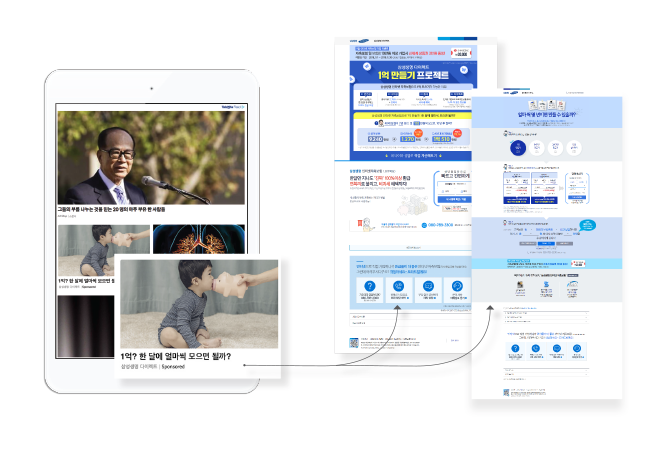
As a result, Samsung Life delivered over 13,000 new insurance quotes in six months.
How Do You Measure Brand Awareness?
With these strategies to choose from, now you might be wondering how to measure brand awareness. This will depend on your brand awareness objectives.
If you are looking to increase brand awareness through native advertising, for instance, you’ll track metrics such as impressions, click-through rates, and website traffic.
If you’re looking to build brand awareness on social media, you’ll track analytics contained on each individual social platform.
Most importantly, you’ll want to consistently monitor your campaigns so you can optimize according to people’s interests and behaviors, and successfully increase brand awareness among your target audience.
Some Final Thoughts
Building brand awareness doesn’t have to be as daunting as it might seem. If you take anything away from this post, remember this:
- Brand awareness is important because it helps people remember your products and your mission.
- Blogs, infographics and guest articles are a great way to get started with content.
- Native advertising, social media and influencer partnerships are a great way to get started with the distribution of that content.
Finally, it’s important to remember that brand awareness isn’t “one and done.” Keep testing new strategies to see what makes the biggest impact.